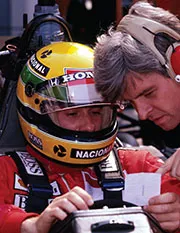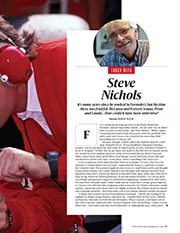“The Stewart team had a family atmosphere, and though everything went ‘Jag’ and became green for 2000, the corporate shift didn’t happen until as I was leaving,” Herbert explains.
However, smaller problems which set in early had begun to manifest themselves as serious issues later on.
“The 1999 car was good, and the 2000 car was better,” says Herbert. “But the problem was the other teams’ [cars] were much better.
“Every test we went to we had problems in the sump with the oil. We had suspension issues throughout the year – [test driver] Luciano Burti had a big crash at Silverstone then I had a huge one at Malaysia.
“We managed a good result at Monaco with Eddie [Irvine, fourth], and from there [performance] expectations from the corporate side began to creep in.”

Irvine brought Jaguar its first podium at Monaco in 2001
Clive Mason /Allsport via Getty Images
For those at the management level, things were a bit more uncomfortable. The team’s technical director Gary Anderson explained to Simon Taylor in 2016 how this manifested itself on track.
“The 2000 Stewart – as it was to have been – was the last F1 car that was entirely my own design,” he said.
“The team was taken over by Ford and badged as Jaguar – all of Jackie’s way of running things was gone, switched off like a light.









